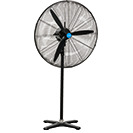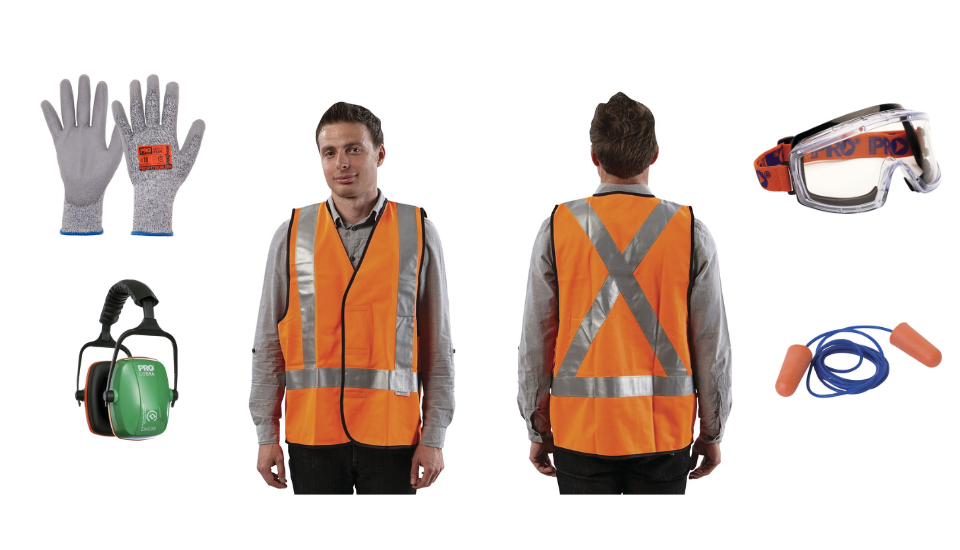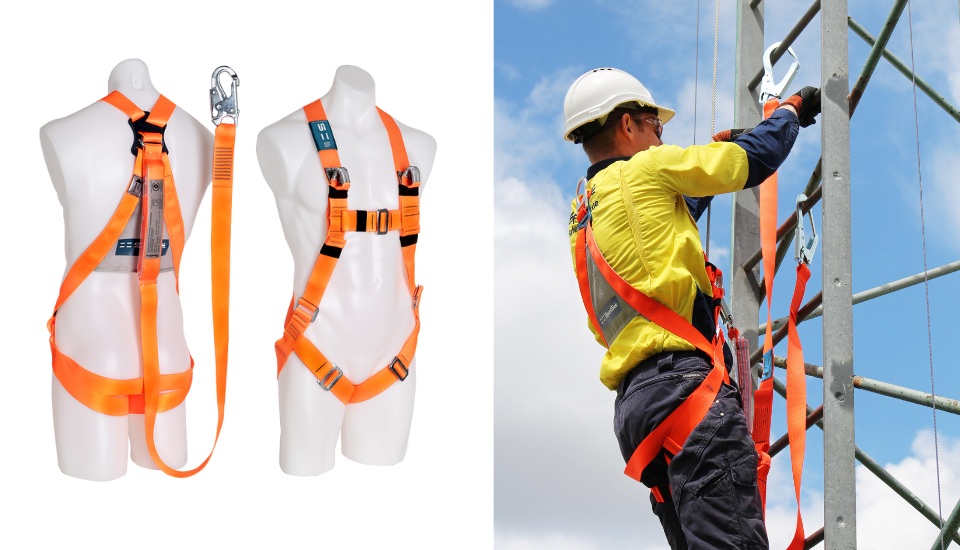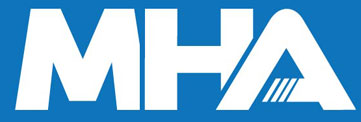What Is Personal Protective Equipment (PPE)?
Date Posted:7 July 2025
Ensure Work Health and Safety compliance with this guide to Personal Protective Equipment (PPE) selection and maintenance.
Verdex Insights: At a Glance
-
The Challenge: Many workplaces rely on PPE but fail to ensure it’s properly selected, certified, or maintained. Ill-fitting, expired, or unsuitable PPE can lead to injuries, compliance breaches, and false confidence in safety measures.
-
The Insight: PPE serves as the final layer of protection when hazards cannot be eliminated. Meeting Australian Standards (AS/NZS) and ensuring correct usage and training are essential for effective risk management across industries such as construction, warehousing, logistics, and food processing.
-
The Verdex Solution: Verdex supplies a comprehensive range of WHS-compliant PPE, including hard hats, gloves, eyewear, respirators, safety vests, and hearing protection. Designed for Australian conditions, our PPE combines comfort, durability, and compliance. When paired with safety signage, barriers, and first aid kits, Verdex helps workplaces maintain complete, end-to-end safety systems.
What Is Personal Protective Equipment (PPE)?
Personal Protective Equipment (PPE) refers to clothing and equipment designed to minimise exposure to workplace hazards that can cause serious injuries or illnesses. This includes protection from physical, chemical, biological, and ergonomic risks.
PPE acts as a protective barrier between the worker and potential dangers in the environment, such as falling objects, harmful substances, or excessive noise.
In Australia, PPE must comply with Work Health and Safety (WHS) legislation and meet relevant standards, including AS/NZS 4501 for occupational protective clothing and others depending on the type of PPE. PPE is a critical component of workplace safety systems and must be appropriately selected, fitted, maintained, and used to be effective.
Why PPE Is Critical for Workplace Safety
PPE is often referred to as the last line of defence when managing risks in the workplace. When hazards can't be completely eliminated or controlled through engineering or administrative measures, PPE becomes essential.
It helps protect workers from:
-
Physical injuries like cuts, crush injuries, and burns
-
Long-term health conditions caused by chemical exposure, dust inhalation, or loud noise
-
Biological hazards in health, agriculture, or food handling environments
Employers are legally obligated under WHS laws to provide suitable PPE, ensure workers are trained in its correct use, and maintain it in good condition. Effective PPE programs reduce injury rates, improve worker confidence, and demonstrate a business' commitment to safety.
Additional workplace controls, such as clearly marked workplace safety signage and physical separation, help reinforce the safety culture and ensure PPE is only one part of a broader risk management plan.
Common Types of PPE Used in Australian Workplaces
Workplaces across Australia, from construction and logistics to food manufacturing, require different types of PPE clothing depending on the nature of the job. Here's a breakdown of the most commonly used PPE categories:
Head Protection
Hard hats and bump caps are used to protect the skull from impact and falling objects. They are essential on construction sites, mining operations, and busy warehouses with overhead hazards.
-
Our products include:
Eye & Face Protection
Safety goggles and face shields prevent injury from flying debris, sparks, splashes, or dust. They're necessary when grinding, welding, cutting, or working with chemicals and biohazards.
-
Our products include:
-
Safety Glasses (available in clear and smoke)
Hand Protection
Gloves protect against cuts, punctures, abrasions, burns, and chemical exposure. Different gloves serve different needs, like cut-resistant gloves for metalwork or nitrile gloves for chemical handling.
-
Our products include:
Hearing Protection
Earplugs and earmuffs reduce the risk of hearing damage in high-noise areas, such as factories, printing plants, and construction zones. They are critical where sound levels exceed 85 dB.
-
Our products include:
Respiratory Protection
Dust masks, P2 respirators, and full-face respirators protect against airborne contaminants. Required in demolition sites, sanding operations, or where asbestos or hazardous fumes are present.
-
Our products include:
Foot Protection
Steel-capped boots and non-slip footwear prevent injury from dropped items, slips, and sharp objects. These are standard in warehousing, manufacturing, construction, and even food processing.
Body Protection
Hi-vis vests improve visibility, while coveralls and aprons shield the body from heat, chemicals, or mechanical hazards. Common across traffic control, industrial maintenance, and chemical plants.
-
Our products include:
If you’re looking to expand your workplace’s safety equipment inventory, ensure it aligns with both job-specific hazards and relevant compliance standards.
When Is PPE Required by Law in Australia?
According to Safe Work Australia, PPE must be used when risks cannot be eliminated or minimised through other controls. This requirement applies under the Model WHS Regulations, which have been adopted by most states and territories.
Employers must:
-
Conduct a risk assessment to identify hazards that require PPE
-
Supply PPE at no cost to employees
-
Ensure PPE meets relevant Australian Standards
-
Provide training on how to properly use, store, and maintain PPE
PPE requirements vary depending on the industry. For example:
-
Construction workers need hard hats, boots, hi-vis, and hearing protection
-
Agricultural workers may require respiratory and skin protection for pesticides
-
Warehouse staff often use gloves, safety boots, and eye protection
Complementing PPE with appropriate barriers and bollards can further reduce the likelihood of high-risk interactions in traffic-prone or high-movement areas.
What to Look for When Choosing PPE That Works
Choosing the right PPE isn’t just about ticking a compliance box. It’s about protecting lives. Here’s how to make sure your workplace is equipped properly:
-
Start with a risk assessment: Identify the hazards and tasks performed by each role.
-
Select certified PPE: Look for products that meet AS/NZS standards.
-
Consider usability: PPE should be comfortable, well-fitting, and not restrict movement or visibility.
-
Durability matters: Choose materials that can withstand the environment (e.g., heat, chemicals, wear and tear).
-
Train staff: Make sure every team member knows how to correctly wear and maintain their PPE.
-
Inspect regularly: Check for wear, damage, or expiry, and replace PPE when needed.
For environments where medical response is a key concern, such as warehouses, schools, or outdoor worksites, make sure to include well-stocked workplace first aid kits as part of your safety plan.
Verdex offers a wide range of compliant PPE tailored to Australian industries, designed for performance, comfort, and WHS compliance. To find out more, get in touch with us by:
-
Emailing sales@verdex.com.au
-
Completing our contact form
You can also explore our full range of materials handling equipment online.
Frequently Asked Questions
What is considered PPE under Australian law?
PPE includes any clothing or equipment designed to protect the wearer from workplace hazards, such as helmets, gloves, goggles, boots, respirators, and hi-vis clothing. It must meet relevant Australian standards.
Who is responsible for supplying PPE?
The employer is legally responsible for providing PPE to workers, ensuring it is suitable, properly maintained, and replaced when necessary. Workers must also wear and use PPE correctly.
Is PPE mandatory in every workplace?
Yes. If a risk is present that cannot be eliminated or minimised, PPE becomes mandatory under WHS regulations. The type of PPE required depends on the specific hazards.
How often should PPE be replaced?
PPE should be inspected regularly and replaced if it is damaged, worn out, contaminated, or past its expiration date. Disposable PPE should only be used once.
Does PPE need to meet Australian standards?
Yes. All PPE used in the workplace must meet Australian or joint Australian/New Zealand standards, such as AS/NZS 4501, 2210, or 1337, depending on the item type.






















































































 Trolleys & Hand Trucks
Trolleys & Hand Trucks Cage Trolleys
Cage Trolleys Cleaning Carts & Trolleys
Cleaning Carts & Trolleys Construction Trolleys
Construction Trolleys Custom Trolleys
Custom Trolleys Hand Trucks & Dollies
Hand Trucks & Dollies Laundry/Linen Trolleys
Laundry/Linen Trolleys Lifting Trolleys
Lifting Trolleys Order Picking Trolleys
Order Picking Trolleys Panel Cart Trolleys
Panel Cart Trolleys Platform Trolleys
Platform Trolleys Powered Trolleys
Powered Trolleys Shelf & Tiered Trolleys
Shelf & Tiered Trolleys Shopping Trolleys
Shopping Trolleys Stainless Steel Trolleys
Stainless Steel Trolleys Tool Trolleys
Tool Trolleys Utility & Service Carts
Utility & Service Carts Lifting & Handling Equipment
Lifting & Handling Equipment Forklift Attachments
Forklift Attachments Jib Attachments
Jib Attachments Lifting Hoists & Pallet Hooks
Lifting Hoists & Pallet Hooks Load Skates & Tow Tugs
Load Skates & Tow Tugs Manual Stackers & Lifters
Manual Stackers & Lifters Pallet Jacks
Pallet Jacks Pallet Lifters
Pallet Lifters Pallet Rotators & Dispenser
Pallet Rotators & Dispenser Powered Pallet Trucks & Electric Lifters
Powered Pallet Trucks & Electric Lifters Scissor Lift Trolleys and Tables
Scissor Lift Trolleys and Tables Conveyor Equipment
Conveyor Equipment Conveyor Frames & Stands
Conveyor Frames & Stands Roller & Skate Conveyors
Roller & Skate Conveyors Ladders & Access Equipment
Ladders & Access Equipment Container & Yard Ramps
Container & Yard Ramps Ladders & Step Stools
Ladders & Step Stools Work Platforms & Crane Cages
Work Platforms & Crane Cages Drum Handling Equipment
Drum Handling Equipment Drum Storage & Bunding
Drum Storage & Bunding Drum Trolleys & Lifters
Drum Trolleys & Lifters Forklift Drum Handling
Forklift Drum Handling Waste Handling & Bins
Waste Handling & Bins Bin Lifters & Tippers
Bin Lifters & Tippers Plastic Waste & Wheelie Bins
Plastic Waste & Wheelie Bins Steel Waste & Tipping Bins
Steel Waste & Tipping Bins Waste Carts
Waste Carts Dangerous Goods Storage & Spillage
Dangerous Goods Storage & Spillage Aerosol Cans Storage Cages
Aerosol Cans Storage Cages Bunded Pallets & Storage
Bunded Pallets & Storage Corrosive Goods Storage Cabinets
Corrosive Goods Storage Cabinets DG Storage & Trolleys
DG Storage & Trolleys Flammable Liquid Cabinets
Flammable Liquid Cabinets Forklift Gas Storage Cages
Forklift Gas Storage Cages Site Storage
Site Storage Spill Kits
Spill Kits Shelving & Storage Equipment
Shelving & Storage Equipment Stillage & Transport Cages
Stillage & Transport Cages 750 Series Cage Configurations
750 Series Cage Configurations Heavy Duty Cabinets
Heavy Duty Cabinets Heavy Duty Shelving
Heavy Duty Shelving Mega Bins & Pallets
Mega Bins & Pallets Packing & Workbenches
Packing & Workbenches Parts Trays & Stor-Pak Bins
Parts Trays & Stor-Pak Bins Pegboard & Louvre Panels
Pegboard & Louvre Panels Plastic Bins & Crates
Plastic Bins & Crates Plastic Handling Solutions Bins
Plastic Handling Solutions Bins Plastic Pallets
Plastic Pallets Stack & Nest Bins
Stack & Nest Bins Pallet Racking Accessories
Pallet Racking Accessories Workplace Equipment
Workplace Equipment Modular Workbenches
Modular Workbenches Electric Height-Adjustable Workbenches
Electric Height-Adjustable Workbenches Floor Matting
Floor Matting General Workplace Equipment
General Workplace Equipment Industrial Weighing Scales
Industrial Weighing Scales Packaging Machinery
Packaging Machinery Stationery Cupboards
Stationery Cupboards Storage and Stillage Cages
Storage and Stillage Cages Tool Trolleys
Tool Trolleys Tooling Cabinets
Tooling Cabinets Workshop Fans and Coolers
Workshop Fans and Coolers Safety Barriers, PPE & Signage
Safety Barriers, PPE & Signage Barriers & Bollards
Barriers & Bollards First Aid Equipment
First Aid Equipment Gloves, Knives and PPE
Gloves, Knives and PPE Signage
Signage Cleaning & Site Supplies
Cleaning & Site Supplies Cleaning Equipment
Cleaning Equipment Cleaning Trolleys
Cleaning Trolleys Rubbish Bins
Rubbish Bins Signs & Traffic Supplies
Signs & Traffic Supplies Construction Equipment
Construction Equipment Construction Trolleys
Construction Trolleys Waste Handling
Waste Handling General Site Equipment
General Site Equipment Concrete Equipment
Concrete Equipment Site Storage
Site Storage Lifting Equipment
Lifting Equipment











